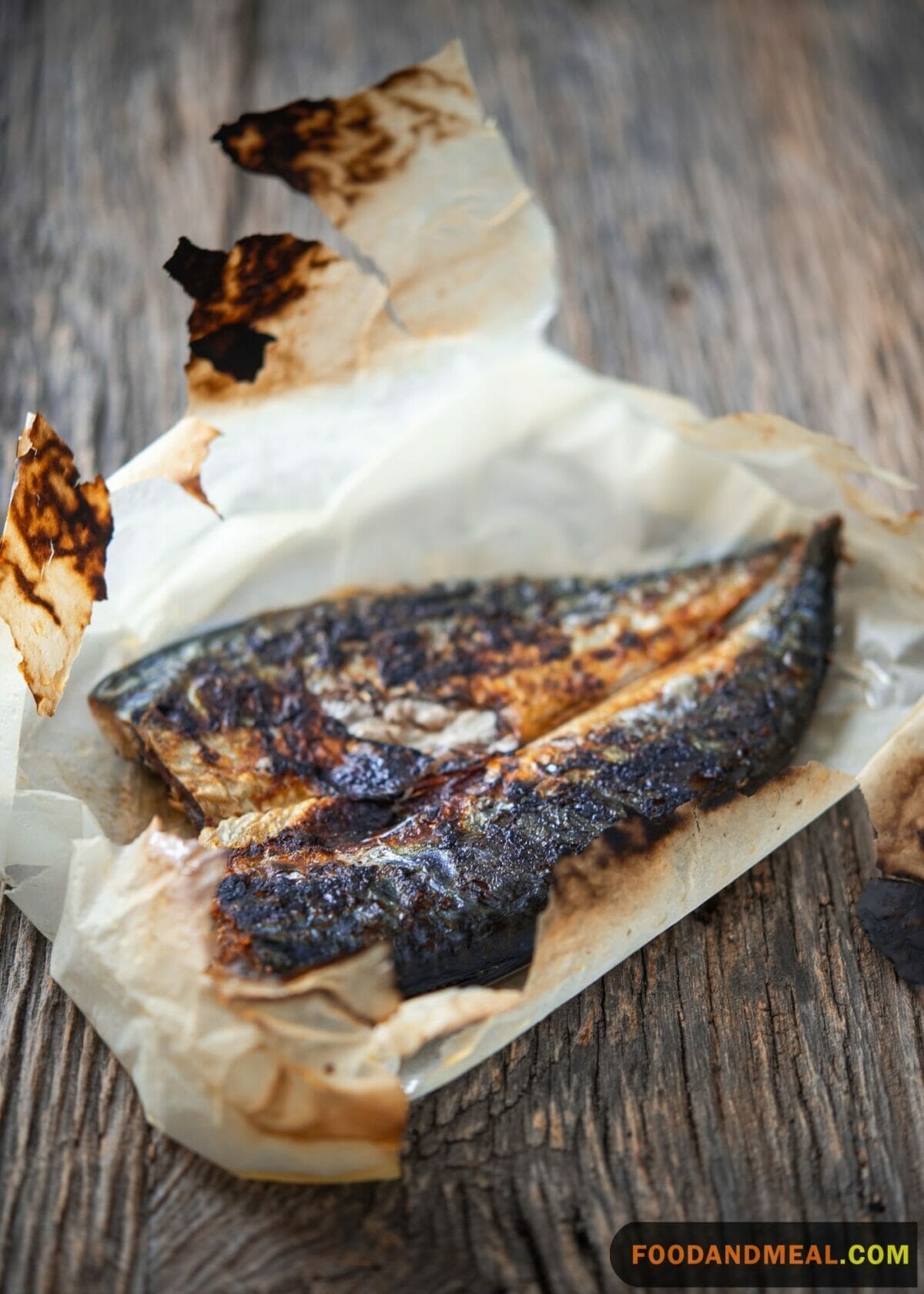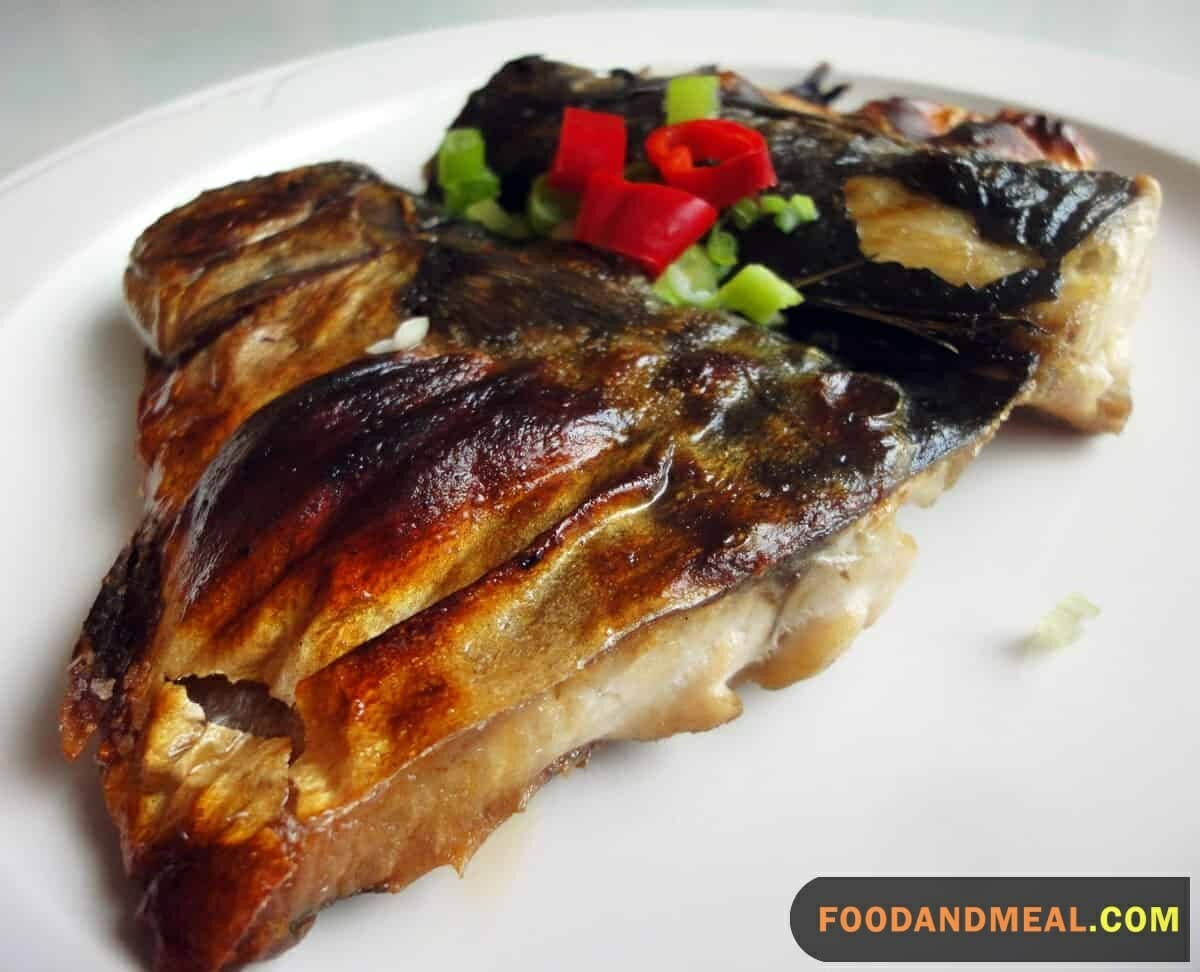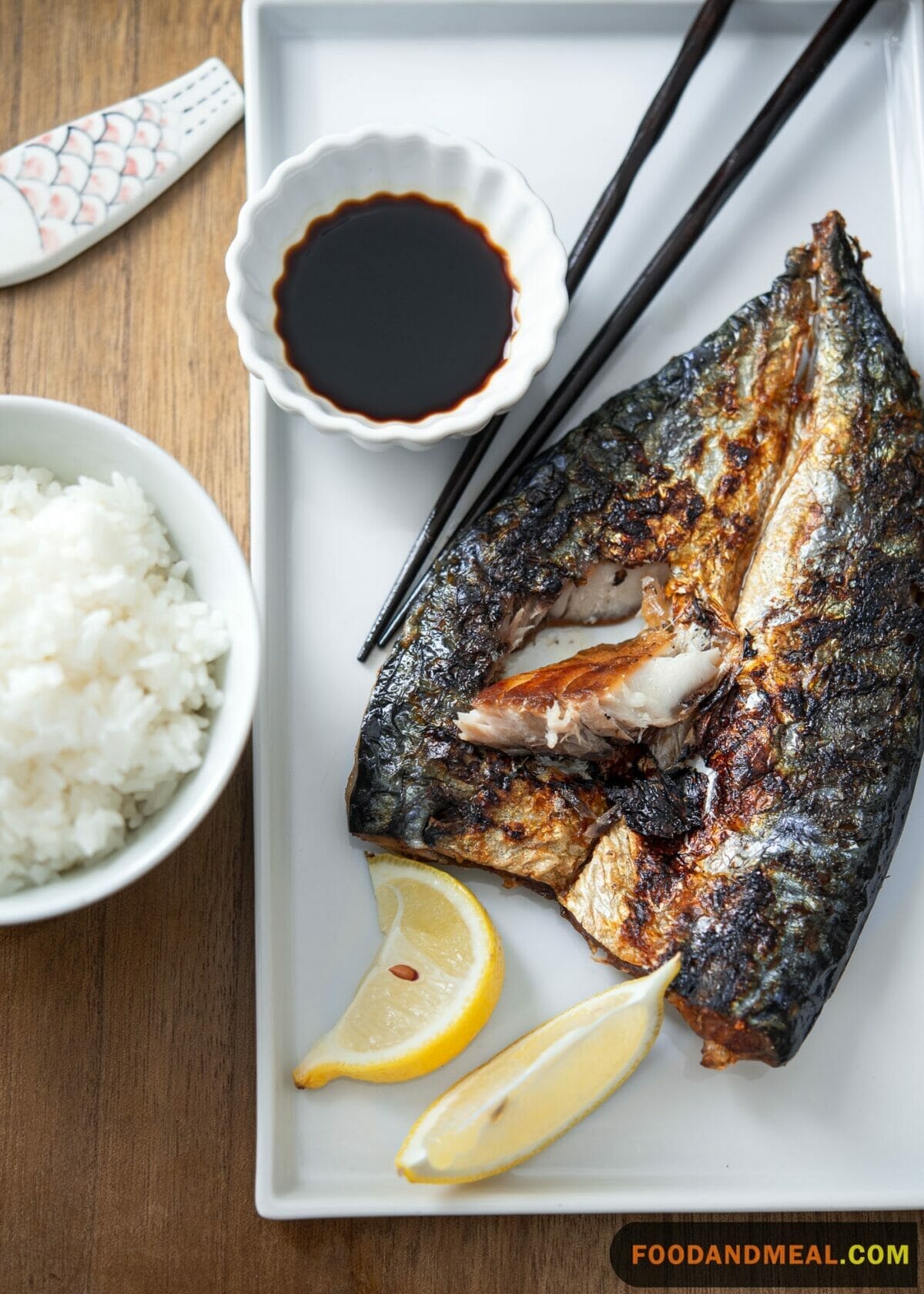I am excited to share my recipe for Broiled Mackerel. As someone who grew up near the coast, fish has always been an important part of my diet. Mackerel in particular holds a special place in my heart.
Some of my fondest childhood memories are of my mother preparing this dish. She would season the fresh fish simply, with just lemon, olive oil and herbs. I can still remember the savory aroma filling the kitchen as it cooked. The crispy skin crackling as she lifted it from the broiler was a treat we looked forward to.
As an adult living in the city, it has been harder to find high quality, fresh fish. But when I do come across mackerel at the market, I get a wave of nostalgia. Preparing this dish transports me back to those happy times. The delicate flavor of the oily flesh contrasted with the charred bits is utterly delicious.6

Broiled Mackerel Korean Recipe

BROILED MACKEREL
Equipment
Ingredients
- Vegetable oil for the baking sheet
- 2 teaspoons salt
- 8 ounces mackerel, whole or deboned with head and tail removed, with skin on
- 1 lemon wedge
Instructions
- Preheat the broiler and lightly oil a baking sheet.
- Sprinkle the salt over the fish on both sides. Let stand for 10 minutes, and then rinse in cold water. Pat dry with a paper towel, and put on the prepared baking sheet.
- Put under broiler and cook for 2 to 3 minutes on each side. The skin will get a little crispy.
- Squeeze the lemon over the fish just before serving.
Video
Notes
SERVING TIP: If you’re making this recipe for guests and want it to look nice, serve this on a platter on a bed of raw onions and thinly sliced lemon rounds with Scallion Salad (here) on the side.
Nutrition
© Food And Meal
This website provides approximate nutrition information for convenience and as a courtesy only. Nutrition data is gathered primarily from the Spoonacular Database, whenever available, or otherwise other online calculators.
Alternative Method: Oven-Baked Mackerel Korean Recipe
To make this flavorful baked mackerel dish, preheat the oven to 375°F. Clean, gut, and scale the mackerel. Marinate it in Korean sauce for 30 minutes. Place the marinated fish in a baking dish, pouring extra marinade over it. Bake for 25-30 minutes, basting halfway for added flavor. Optional: broil for a crispy skin for 2-3 minutes. Let the mackerel rest, garnish with green onions and sesame seeds, and serve with steamed rice and kimchi. Enjoy the deliciously cooked dish!
Cooking Tips

One of my favorite childhood memories is standing next to my mother in the kitchen, breathing in the savory aroma of broiling mackerel. She taught me little tricks like scoring the skin before cooking to prevent curling. I still remember the anticipation as the skin crackled and crisped.
Now when I broil mackerel at home, I take care to choose fresh fillets and coat both sides lightly in olive oil before seasoning. Too much oil can make the skin soggy. I’ve found lemon, garlic, oregano and black pepper make a simple, delicious combo. Resist the urge to flip the fillets more than once. Frequent flipping leads to flaky flesh.
As the fish cooks, keep an eye on it. I enjoy a nice char, but too much and the flavor turns bitter. Mackerel goes from golden brown to burnt quickly under high heat. Patience as it broils leads to sweet, delicate meat that melts in your mouth.
Serving Suggestions for Broiled Mackerel Korean Recipe

For a delightful pairing with the Broiled Mackerel, consider serving it with Thai Mango Sticky Rice. The sweetness of the mango and the sticky rice will complement the savory flavors of the mackerel, creating a harmonious balance. The juicy and succulent Thai Mango Sticky Rice brings a tropical twist to the meal, making it a perfect choice for a well-rounded and satisfying dining experience. Enjoy the contrast of textures and flavors between the tender mackerel and the luscious mango sticky rice. This combination is sure to elevate your culinary experience with a delightful blend of Thai-inspired goodness.
FAQs on Broiled Mackerel Korean Recipe

- What is the best cooking method for mackerel? The best cooking method for mackerel often depends on personal preference, but broiling, grilling, and pan-frying are popular choices. Broiling imparts a unique flavor and texture, while grilling adds a smoky essence. Pan-frying is great for a quick and crispy finish.
- What is the best way to prepare mackerel? The best way to prepare mackerel is to ensure it is cleaned, gutted, and scaled before cooking. Marinating the mackerel in flavorful sauces or spices enhances its taste. Common preparation methods include broiling, grilling, or pan-frying, depending on the desired outcome.
- How do you know when mackerel is done? Mackerel is done when its flesh becomes opaque and easily flakes with a fork. The internal temperature should reach at least 145°F (63°C). Overcooking may result in a dry texture, so it’s crucial to monitor the cooking time closely.
- Do you have to clean mackerel before cooking? Yes, cleaning mackerel before cooking is essential. Remove the innards, scales, and ensure it is thoroughly cleaned. This not only enhances the flavor but also ensures a pleasant dining experience.
- What kind of mackerel is best for this recipe? There are several types of mackerel available, but for a traditional Korean broiled mackerel dish, Pacific or Atlantic mackerel works best. They have a rich flavor and oily texture that’s perfect for broiling.
- Can I use frozen mackerel for this dish? Absolutely! While fresh mackerel is ideal, frozen mackerel can be a great alternative. Just ensure it’s fully thawed before beginning your preparations. If using frozen, try to opt for mackerel that hasn’t been frozen for too long to maintain its best texture and flavor.
- I don’t have a broiler. Can I still make this dish? Of course! While broiling gives the mackerel a distinctive taste and texture, you can also pan-fry or grill the mackerel. If using an alternative method, make sure to keep a close eye on the fish to prevent overcooking.
- What’s the best way to store leftovers? Leftover broiled mackerel should be cooled to room temperature, then placed in an airtight container. It’s best enjoyed within 2 days when stored in the refrigerator. For longer storage, you can freeze it, but try to consume within a month to maintain its best quality. When reheating, use an oven or toaster oven to restore its crispy texture.
Conclusion
In conclusion, mastering the art of broiling mackerel opens up a world of delectable possibilities in the kitchen. Whether you opt for the rich and traditional Korean broiled mackerel or explore variations with different spices and marinades, the key lies in ensuring your mackerel is cleaned, properly seasoned, and cooked to perfection. The versatility of this cooking method allows you to experiment with flavors and textures, providing a delightful dining experience for you and your guests.
For more culinary inspiration and a diverse array of recipes featuring mackerel and other delicious ingredients, be sure to explore the extensive collection at Food And Meal. Visit foodandmeal.com to discover a treasure trove of recipes, cooking tips, and meal ideas that cater to various tastes and preferences. Elevate your home-cooking journey with the guidance and expertise shared on Food And Meal, where every dish is a celebration of flavors and creativity.
Hi! I'm Nazia of ‘Nazia Cooks’, a self-taught baker and cook residing in Chennai. Rooted in the rich South Indian culinary landscape, my palate has expanded to embrace global flavors. I revel in crafting fusion dishes, melding traditions to birth unique tastes.




